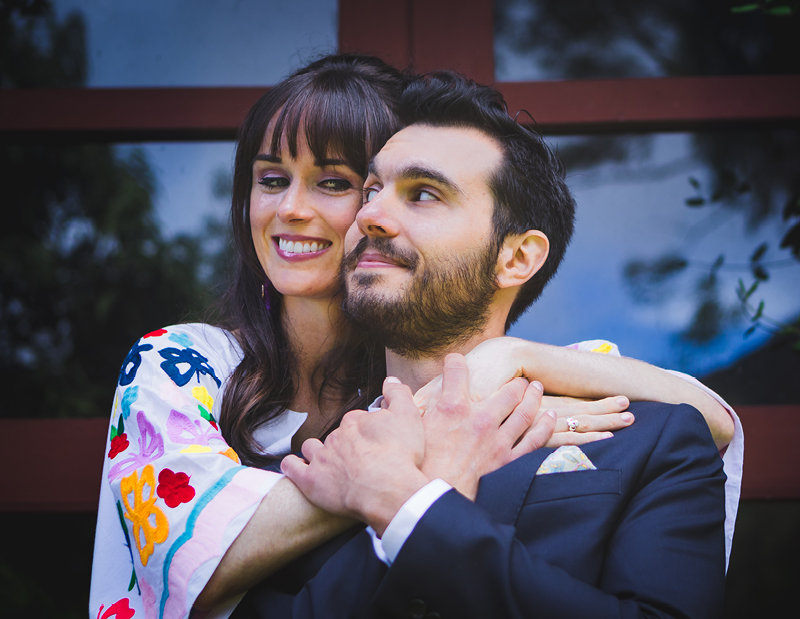Christopher Mitchell Spotlight

March 9, 2023
Christopher Mitchell (known as Mitch to friends and colleagues) is Director of Radiology Analytics for the Department of Radiology & Biomedical Imaging. Working with our executive leadership to ensure that radiology is a data-savvy department, Mitch leverages a vast amount of clinical data to enable decisions based on measurable facts instead of instinctive hunches. Mitch summed up radiology analytics this way: “If you don't measure it, you can’t improve it. If you can't measure an aspect of the business, then you don't know if it's getting better or worse.”
Mitchell graduated from university with a degree in philosophy and a declaration that he would never work in an office job. After a year helping disaster relief with the American Red Cross in the greater Chicago area, the idea of a desk job away from the Great Lakes cold started to feel more tempting. He transitioned from aiding the immediate needs of house fire victims into participating in healthcare work, working as a research and data analyst at Northwestern Memorial Hospital in Chicago. This new interest led to him pursuing a master’s degree in Medical Informatics and entering his ongoing career in healthcare. Mitch observed, “I like being able to solve a problem. Most analytics requests take the form of a puzzle. How can I put together this information in the format that's desired to be able to provide insight. And there are other smaller puzzles within that, to get one type of data to link up with this other type of data. Then, once you get all your code to compile, it’s like you solved the puzzle, beaten the level. The solution is unique every time.”
A primary purpose of data analytics, both in our department and elsewhere, is to help put hard data behind high-level decisions. During daily operations, imaging produces an immense quantity of data; such as what time a patient arrived, what time a scan began, what type of scan was performed. That data has the potential to improve operational efficiencies or to guide new research. As Mitch puts it, “Analytics eases the entire process of producing, storing, and using raw data to improve patient care. The sheer volume of scans that the department performs every day is incredible, and it’s a great resource for data analytics.”
Thanks to Mitch’s efforts, “Executive leadership now has a dozen or so KPI (key performance indicators) to review and ask of our data: ‘How are we doing compared to this time last year? Does capacity match demand? Where can we improve?’ The more metrics that we have, the more we are able to see what’s going well and where we’re off-track.”
Mitch notes that deciding how best to measure something is often the very first puzzle. As an example, he proposed different ways to measure overall department capacity. One such measurement would examine the number of days until the third next available appointment. Leaving the first and second options aside as possible conflicts on the patient’s side, the third next available option provides the department a way to look at its long-term relative capacity. However, there are also other more sophisticated possibilities such as measuring how many days into the future 40% of the schedule is open and available.
This data gathering is crucial to making decisions and to devising solutions. “Once department-wide score cards, based on our KPIs, are firmly established, then similar analytics will be able to offer insight down the chain, and I will work with modality managers and others to provide the data that can help them achieve ongoing improvements.”
Coming to the Department of Radiology and Biomedical Imaging has given Mitch a new view of the potential of medical data analytics in imaging specifically. “Data analytics is a participant in all of the activities that go on in radiology. If someone is doing a research study then they are going to need analytics. If someone's doing a process improvement project, they're going to need analytics to be able to understand where improvements were made or where their potential opportunities lie.” Moreover, this approach to broad-based analysis benefits from Mitch’s range of healthcare experience. “After over a decade of working in the healthcare industry, I often saw myself as a kind of journeyman. My enterprise role has allowed me to see into many different departments, from OB, to cardiology, to oncology. However, since getting into radiology I have been so impressed by how important imaging is in assisting every aspect of the hospital system. I wasn’t aware of the scope of the department; how it touches everything.”
 When it comes to future opportunities, AI is on the horizon, ready to transform operations. “If you look at all the publications in which AI is the subject, 80% of those publications are done in radiology. AI is going to affect radiology much more than any other department around the hospital as it is very primed to be facilitated by AI. In the future, radiologists are not going to be replaced by AI. Radiologists who don’t use AI are going to be replaced by radiologists who embrace AI.”
When it comes to future opportunities, AI is on the horizon, ready to transform operations. “If you look at all the publications in which AI is the subject, 80% of those publications are done in radiology. AI is going to affect radiology much more than any other department around the hospital as it is very primed to be facilitated by AI. In the future, radiologists are not going to be replaced by AI. Radiologists who don’t use AI are going to be replaced by radiologists who embrace AI.”
Mitch’s career as a talented analytical thinker is not his only side, he is also a practical and kinesthetic craftsman. His passion in life is designing and making wooden furniture, everything from simple objects to a complicated LP record-storage credenza. As his woodworking skills advanced, he began to turn his attention to designed objects and sculptural work. “I started self-teaching in my twenties with small projects and very rudimentary tools in Chicago. Now I am a part owner in a company that uses salvaged wood from New Orleans to make beautiful whole wood products.” That company, Functionally Yours, blends the decorative arts with both traditional and technology-based fabrication practices to create heirloom quality furniture, decor and art forms. The road to this enterprise was born of a fortuitous meeting. “I was in a co-working space a couple years ago and I saw that another person in the space was doing some design work. We began talking about our own design passions, and eventually we got a shop space together. At first it was just a space to mess around. But as she has a strong design background and I have a strong furniture making background, we eventually formed a partnership that has been able to produce great works together.”

Mitch encourages department colleagues to be in touch, even if it is just to chat and introduce themselves. Mitch may work fully remote in New Orleans with his wife, 2 cats, and a baby on the way, but he greatly enjoys being fully engaged with our department community. “I'm always on Teams, even if it's just to simulate a water cooler experience.
